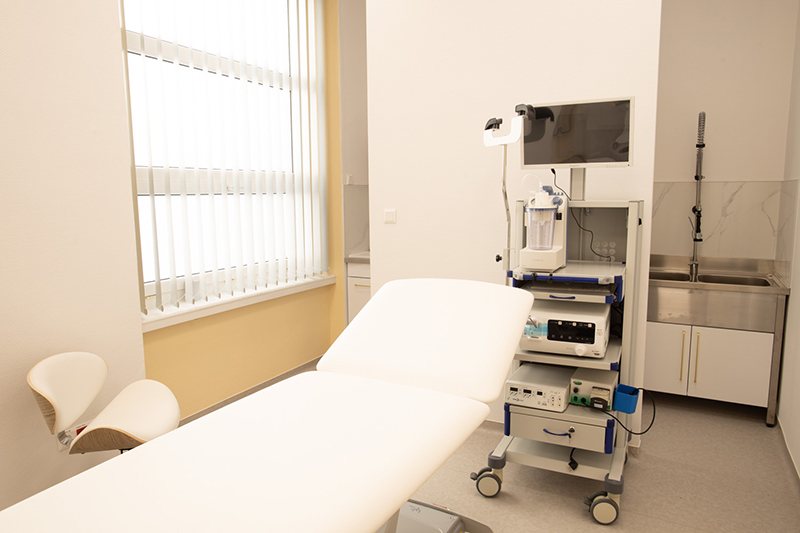
What does
colonoscopy and gastroscopy under sedation involve?
The gastrointestinal tract and its accessory organs (liver, pancreas), collectively known as the digestive system, are responsible for selecting and making available the necessary nutrients from food consumed during meals.
Food intolerance is a common problem, a digestive disorder where consuming certain foods can lead to nausea, bloating, diarrhea, or even skin problems. In case of lactose intolerance or lactose sensitivity, the body is unable to break down the lactose present in milk or dairy products because the required enzyme called lactase is missing or underperforming in the intestinal system. Lactose intolerance can be detected through H2 breath testing, blood sampling, and genetic testing. Symptoms can be eliminated by removing lactose from the diet, and a dietitian can help create the necessary diet plan. In some cases, oral lactase enzyme supplements may be needed.
Other nutrients causing food intolerances can be detected through blood tests, with the ability to check up to 220 different nutrients simultaneously as potential causes of symptoms.
Food allergy is not a digestive system disorder but rather an excessive immune response by the body to certain components of ingested food. Symptoms can range from mild (e.g., itching, hives) to severe (anaphylactic shock – laryngeal edema, circulatory disturbance). If food allergy is suspected, specialist examination and blood tests may be necessary to detect proteins produced during immune reactions to specific nutrients.
Reflux disease is another common problem where acidic stomach contents flow back into the esophagus, causing unpleasant symptoms (heartburn, stomach pain, acidic taste) and potentially leading to inflammation or even ulcers in the esophagus long-term.
Gastroenterology also deals with stomach and duodenal diseases (gastric ulcer, duodenal ulcer), celiac disease, inflammatory bowel diseases (Crohn’s disease, ulcerative colitis), and cancerous diseases (polyps, stomach cancer, colorectal cancer).
In certain cases, gastroscopy and colonoscopy may become necessary, during which a flexible tube, an endoscope, is inserted into the relevant area, allowing examination of mucosal changes and, if needed, sampling from specific areas to help establish the correct diagnosis. Minor procedures (polyp removal) can also be performed during the examination.

When should you consult us?


How does an examination proceed?
Our specialist will first ask you in detail about your known conditions, medications, and previous surgeries. Then they will inquire about your symptoms. For lactose intolerance testing, you will need to drink a solution and then blow into a special machine. Blood tests may be required for digestive disorders, food intolerances, and food allergies. In case of suspected gastrointestinal bleeding or bacterial infection, a stool sample is necessary.
For gastroscopy, a thin, flexible instrument (gastroscope) is inserted through the patient’s mouth to the stomach. While the examination is uncomfortable, most people tolerate it well. Coughing or gagging can be prevented by spraying anesthetic on the throat. During colonoscopy, a thin, flexible tube is also used to visualize the examined intestinal sections. This examination is also uncomfortable but typically not painful, and is generally easier to tolerate than a gastroscopy. Upon request, these procedures can be performed under sedation.
For sedation, our anesthesiologist will ask you detailed questions and thoroughly examine you. They use a short-acting anesthetic administered through an IV for the examination. You won’t feel anything during sedation. Your vital parameters (blood pressure, pulse rate, respiratory rate, ECG, blood oxygen levels) are monitored throughout. After the endoscopy, we observe you in the recovery room until you are fully and safely awake. The effects of the anesthetics can be suspended, making the wake-up time controllable! If you choose sedation, please come with an escort. Do not drive afterward.
Anesthesiology Prices
Book an Appointment
Our Doctors for Gastroscopy and Colonoscopy under Sedation


